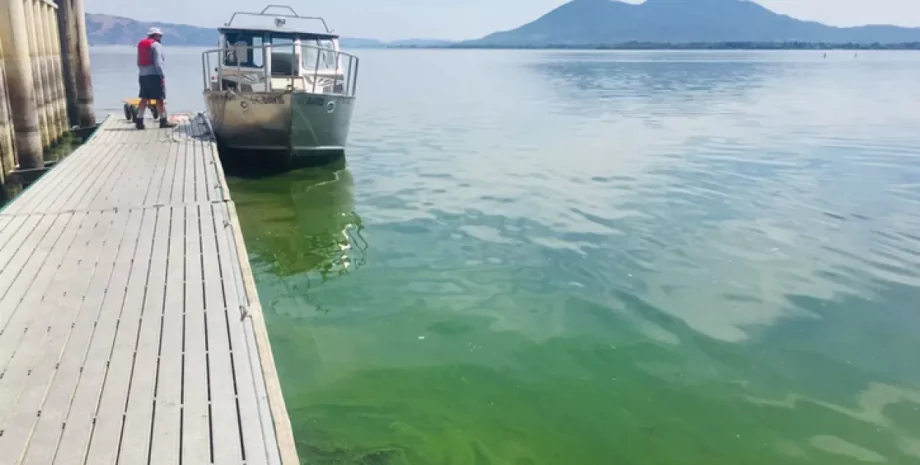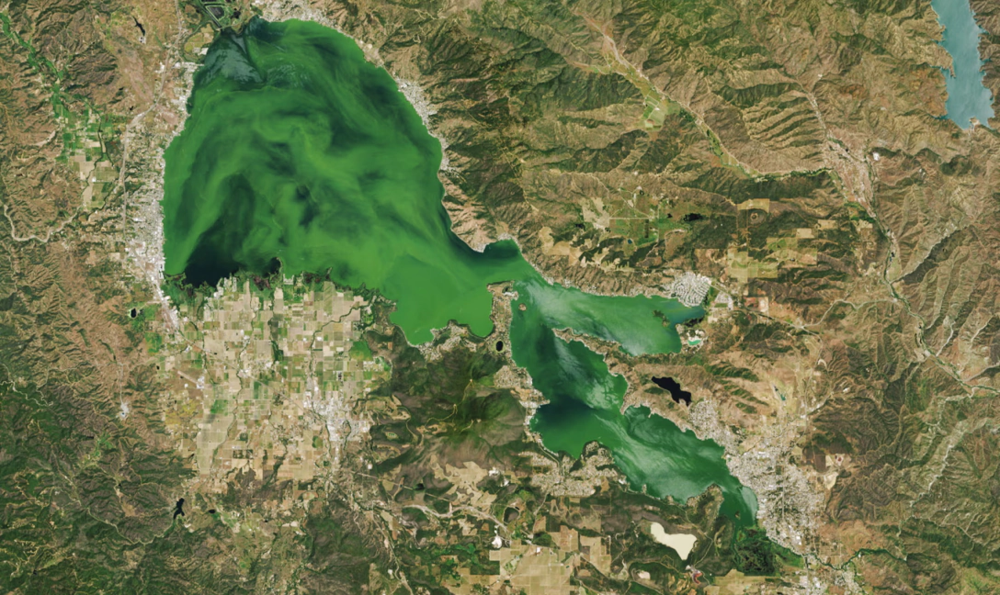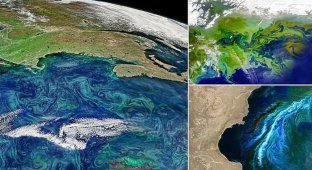Could be a problem: the lake has turned so green that it can be seen from space (2 photos + 1 video)
The reservoir is a major center for fishing, water sports and a favorite vacation spot for local residents. 
The bright hue of Clear Lake, California's largest freshwater basin, may be caused by cyanobacteria and other phytoplankton.
California's largest freshwater lake has turned bright green due to an algae bloom so intense it can be seen from space. A satellite image taken in mid-May was shared by specialists from NASA.
The photo shows bright green swirls across much of the lake, which may be caused by cyanobacteria known as blue-green algae, as well as other types of phytoplankton, the space agency said.
Clear Lake, spread over 68 square miles in northern California, is a major center for fishing, water sports and other recreational activities. 
Health officials warned tourists to be aware of algae blooms, including keeping pets out of the water and avoiding water that appears discolored and is "coated with debris or has a foul odor."
"The appearance of cyanobacteria in Clear Lake is not unusual, but it occurred earlier and in greater numbers than in normal years," the Press Democrat writes.
Tests are currently being carried out to determine the level of toxins in the water. The Big Valley Pomo Indians have been monitoring its quality for ten years.
“This year marks the earliest bloom since the breeding program began sampling cyanobacteria and cyanotoxins along the lake shores in 2014,” the lake’s water quality Facebook page notes.
The publication notes that archaeological finds indicate that people have lived in the vicinity of Clear Lake for at least 12,000 years, and sediment samples indicate that large populations of algae were present in the lake for a similar period of time.
Recently, however, human activity has increased the number of "harmful algal blooms" that can be toxic to people and pets, as well as fish, birds and other marine life.






















